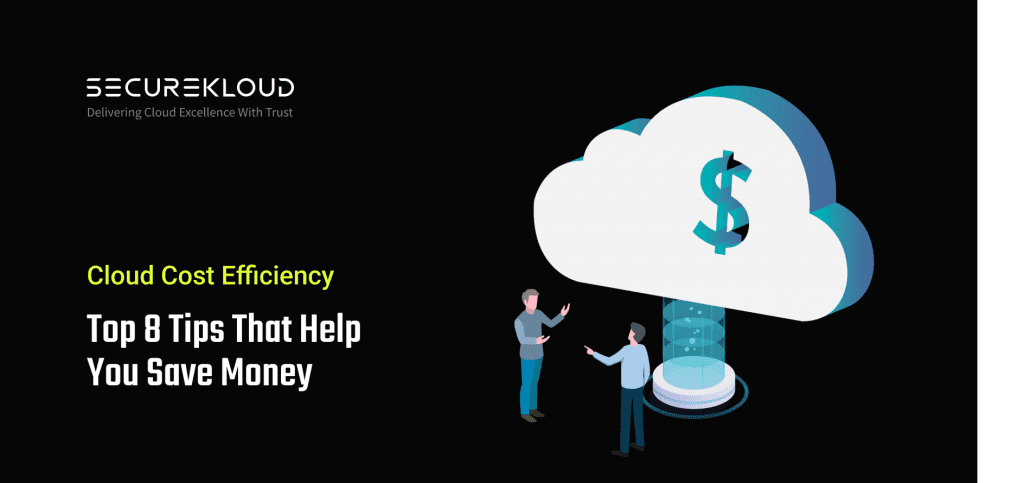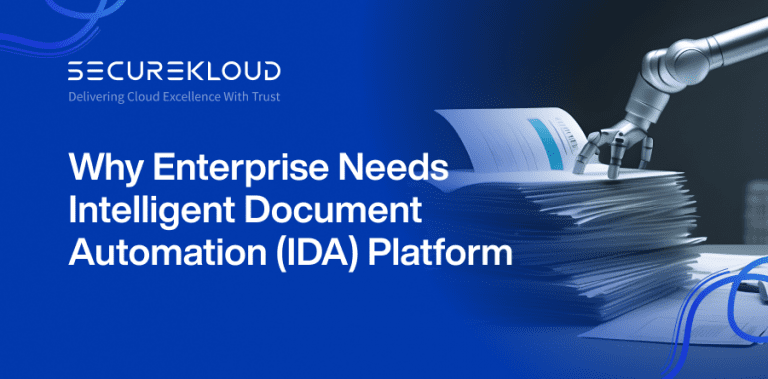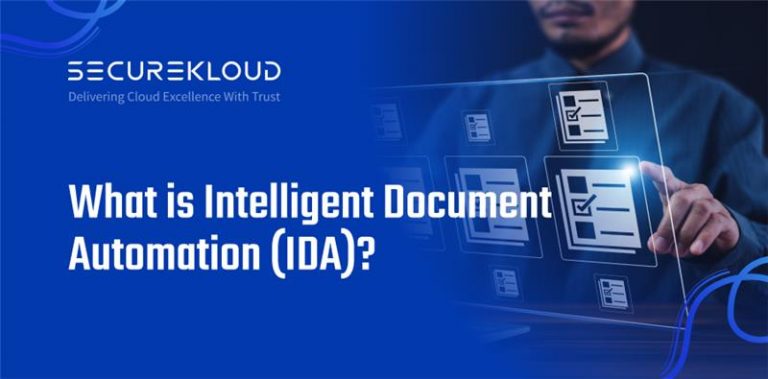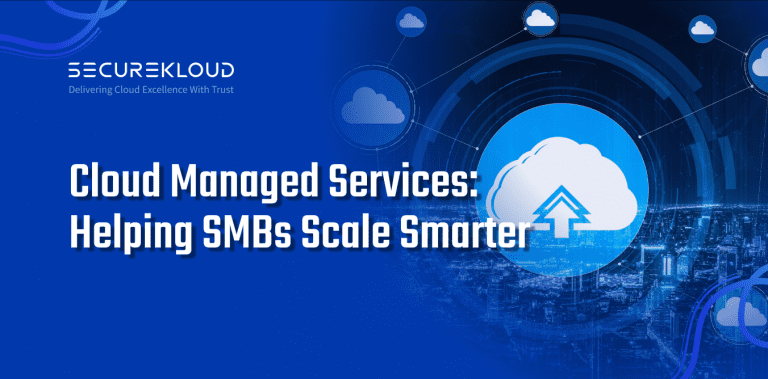- 8Minutes
- 1467Words
- 2Views
In the fast-paced world of technology, cloud computing has become an essential part of many organizations’ IT infrastructure. But, with the ease and convenience of cloud services comes the challenge of managing and controlling costs.
As usage and data storage increase, cloud expenses can quickly add up, leaving many businesses with a hefty bill at the end of the month. According to the Gartner research, 70% of the cloud charges are considered to be wasted. So, instead of reaping cost benefits from the cloud, you may find your cloud bills to be burning.
That’s why we’re here with this blog.
From rightsizing your instances to comparing the multi-cloud cost strategy with that of a single cloud, we’ve covered all significant strategies for improving cloud cost efficiency that can help you save a lot.
Read on to know more.
Top 8 Ways to Enhance Cloud Cost Efficiency
1. Consolidate your idle resources
To reduce cloud expenditures, first, review your cloud invoices. Identify any unused or unattached cloud resources. The cloud bill will keep coming in even if you aren’t using them. So, finding these idle cloud resources should be your first and foremost step in cloud cost efficiency.
The next step involves consolidating them into fewer instances. It’s high time that you phase out those idle and unattached resources to reduce your operating costs if you discover bills for resources, you had bought but no longer use.
You need not hold onto unused resources for potential situations like heavy traffic or hectic seasons. To increase capacity whenever required, you can always make use of cloud capabilities such as load balancing, auto-scaling, and on-demand solutions.
2. Right-sizing your instances
Rightsizing instances is the process of matching the computing resources (such as CPU, memory, storage, and network bandwidth) of a cloud instance to the specific needs of a workload. By optimizing the size of an instance, you can reduce the volume of wasted resources, lower their overall cloud spend, and improve the performance of your applications.
For example, if you have an application that requires a lot of memory but a relatively low CPU, you can choose a larger instance type with more memory and a lower number of CPU cores. On the other hand, if your application requires more CPU power than memory, you can choose an instance type with fewer memory resources but a higher number of CPU cores.
By carefully considering the workload requirements and selecting the appropriate instance size, you can avoid paying for unnecessary resources and reduce cloud computing costs. A well-sized instance will also improve performance, as it will have enough resources to meet the demands of the workload without becoming overwhelmed.
3. Monitor and rectify cost anomalies
Cloud computing costs can quickly spiral out of control if not properly managed. Monitoring and correcting cost anomalies is an important aspect of cloud cost efficiency and helps organizations save money in several ways:
- a) Detecting unexpected spikes or outliers in resource utilization, allowing to address the root cause and adjust accordingly.
- b) Identifying idle or underutilized resources and shutting them down to avoid unnecessary charges.
- c) Monitoring for resource overprovisioning, ensuring only required resources are provisioned.
- d) Implementing cost optimization techniques such as reserved instances, auto-scaling, and spot instances.
- e) Enabling visibility into cost trends and spending patterns, enabling proactive cost management.
This ensures that cloud cost efficiency strategies are properly implemented and configured. You can also monitor their cost trends and spending patterns over time to identify cost optimization opportunities and make proactive decisions to reduce costs.


4. Implement cloud cost optimization tools
Cloud cost optimization tools help organizations to:
- a) Identify and eliminate underutilized and idle resources
- b) Right-size resources to meet actual demand
- c) Automate the process of resource scaling
- d) Monitor resource usage and costs
- e) Implement resource cost allocation and chargeback
- f) Utilize reserved instances and committed use discounts
- g) Implement optimal resource scheduling
Using these tools, you can identify the primary cost drivers so that you can decide the best-suited ways to control them. Get immediate access to in-depth cost and usage data, as well as suggestions for cloud cost optimization.
Utilize these tools to quickly evaluate your expenses and usage over time, create personalized spending limits, and get alerts when those limits are reached.
5. Implement cost allocation tags
Implementing cost allocation tags helps to reduce cloud costs in a big way. You can easily track and allocate costs to specific projects or departments within an organization. Determine the cost of each resource and allocate it to the appropriate cost center by assigning unique tags to resources such as virtual machines, storage volumes, and network interfaces.
This information can then be used to optimize resource usage, identify areas for cost savings, and make informed decisions about resource allocation. Additionally, by having detailed cost information, organizations can negotiate better pricing with their cloud provider and ensure that they are only paying for the resources they actually use.
6. Release idle Elastic IP addresses
When you use cloud service providers like AWS, you pay for the resources you consume, including the number of Elastic IP addresses you use. An Elastic IP address is a static public IP address that is associated with your AWS account, and you are charged for each Elastic IP address you have reserved, even if it is not associated with any resources.
If you have an Elastic IP address that is not associated with any EC2 instances or other resources, it is considered an idle Elastic IP address and will still incur charges. To release it, you simply need to disassociate it from any resources it is currently associated with and then release it from your account.
Releasing these idle Elastic IP addresses is a cost-saving measure because it reduces the number of unused IP addresses you are paying for, which can add up over time, especially if you have multiple idle addresses.
7. Consider multi-cloud vs. single-cloud solutions
While single-cloud solutions may seem less expensive in the short term, they can lead to higher costs in the long term as the cost of resources increases. But a multi-cloud strategy can help organizations save costs by allowing them to take advantage of cloud cost optimizations and pricing benefits offered by different cloud providers, reduce vendor lock-in, and increase flexibility.
When an organization uses a single cloud provider, it is at the mercy of that provider’s pricing and cost optimizations. Over time, the cost of cloud resources can increase, which can result in unexpected expenses for the organization.
Meanwhile, a multi-cloud strategy allows organizations to compare pricing and cost optimizations across different cloud providers and choose the most cost-effective option for their specific workloads. This can result in significant cost savings, as each cloud provider has different pricing models and cloud cost optimizations for different types of resources.
8. Optimize cloud costs at each stage of the SDLC
You can improve cloud cost efficiency at each stage of the software development life cycle (SDLC) by proactively reducing waste and ensuring efficient use of resources.
This can be achieved through:
- Requirements Gathering: Careful planning and understanding of project requirements can help prevent the over-provisioning of resources and reduce unnecessary costs.
- Design: Designing cost-efficient architectures and selecting the right cloud services can help minimize costs in the long run.
- Development and Testing: Automated testing and dev/test environments that are spun up and down as needed can reduce costs associated with idle resources.
- Deployment: Properly utilizing auto-scaling, load balancing, and resource management can help ensure resources are only used when needed, reducing waste and costs.
- Operations and Maintenance: Monitoring and analyzing resource usage can help identify areas where costs can be reduced, and regular clean-up of unused resources can prevent waste.
Putting these tips into practice can help you enhance your cloud cost efficiency in a big way. For that, choosing the best-suited providers of cloud cost optimization services is extremely crucial.
Leverage SecureKloud’s Proven Cloud Cost Optimization Services
Cloud cost optimization is an ongoing process, so it’s important to regularly review your usage and costs to identify new opportunities for savings. Streamline your IT processes across cloud environments with our enterprise-tested cloud cost optimization methods while simultaneously guaranteeing industry-specific security and compliance.
Create a resourceful cloud ecosystem that we optimize for network, storage, compute, and operations, hence lowering resource redundancy and increasing cost-effectiveness. Through our 100+ cloud optimization projects, we have yielded $1 billion in total cloud savings for customers. So, sit back, grab a cup of coffee, and focus on your core business while we work to save on your cloud expenses.
Our experts are here to help you out.
You may also read:





